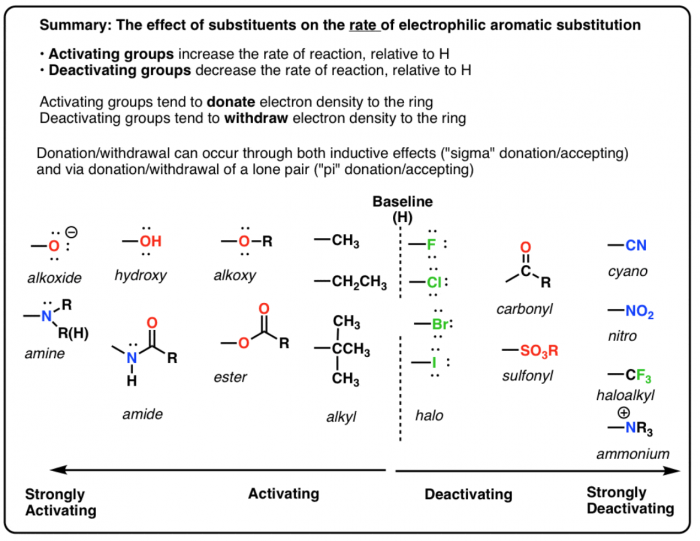Difference between revisions of "Comp Chem 03"
Jump to navigation
Jump to search
| (One intermediate revision by the same user not shown) | |||
| Line 9: | Line 9: | ||
::*'''''Deactivating''''' groups withdraw electrons from the ring. | ::*'''''Deactivating''''' groups withdraw electrons from the ring. | ||
| − | [[File:Screen Shot 2020-04-23 at 8.20.30 AM.png| | + | [[File:Screen Shot 2020-04-23 at 8.20.30 AM.png|700px]] |
The following WebMO/Gaussian activity will highlight the aspects of "activating" and "deactivating." | The following WebMO/Gaussian activity will highlight the aspects of "activating" and "deactivating." | ||
[[WebMO_Electrostatic_Potential_maps|Exercise 5: Electrostatic Potential Maps]] | [[WebMO_Electrostatic_Potential_maps|Exercise 5: Electrostatic Potential Maps]] | ||
Latest revision as of 14:00, 23 April 2020
(4/23/20, bes)
Previous pages:
Okay, so let's use WebMO/Gaussian to do some organic chemistry. The figure below discusses the "activating and "deactivating" nature of electrophilic aromatic substitution. As noted:
- Activating groups donate electrons to the ring,
- Deactivating groups withdraw electrons from the ring.
The following WebMO/Gaussian activity will highlight the aspects of "activating" and "deactivating."
